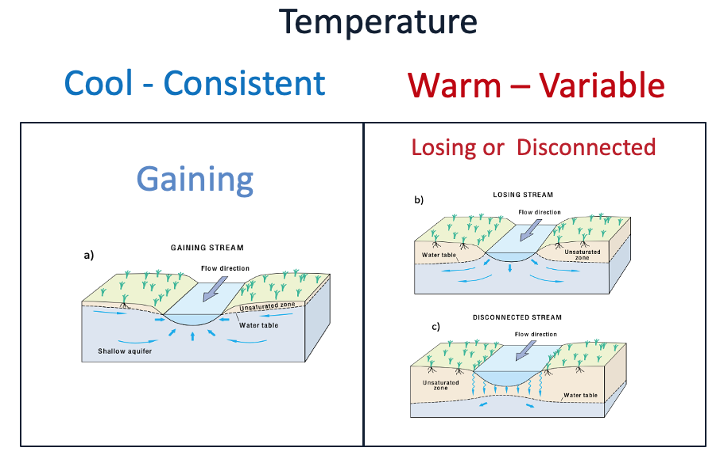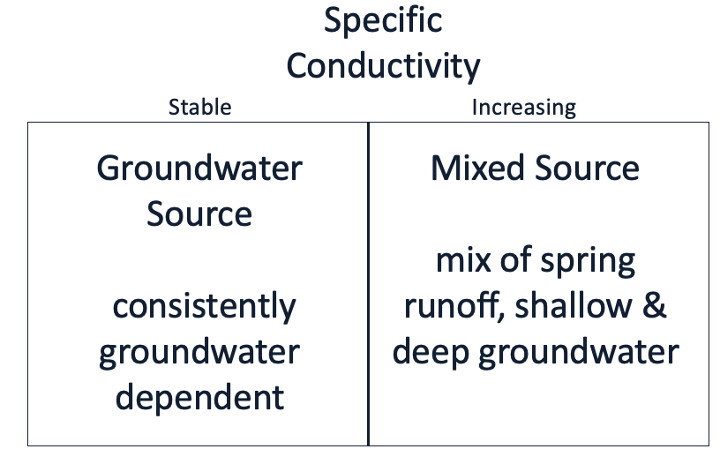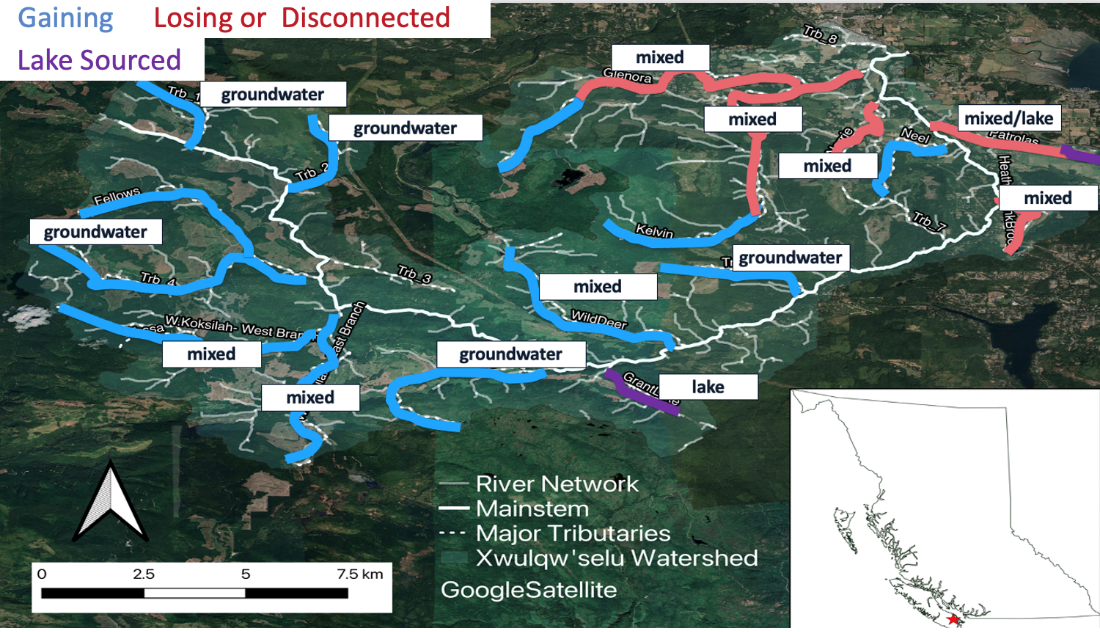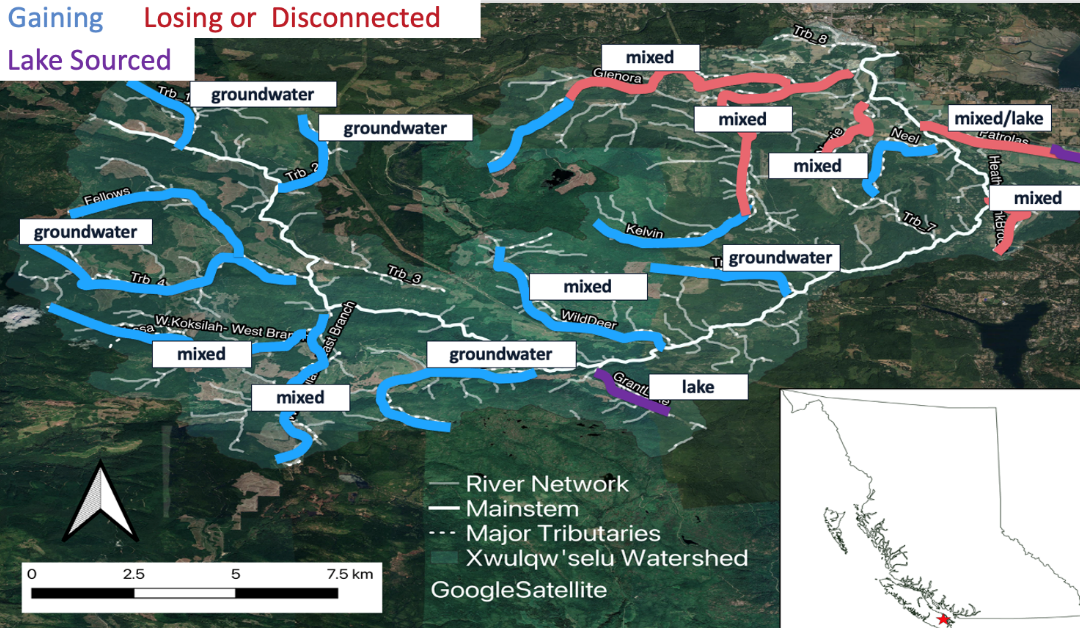It’s a wrap! Community Stream Team monitors and the Xwulqw’selu Connections research team visited with the Xwulqw’selu Sta’lo (Koksilah Watershed) from June through September 2023. While we gathered data and connected with one another, we also awakened our curiosity and enjoyed being present to what we saw and sensed in place.
As we’ve measured stream water temperature and specific conductivity, we’ve been practicing looking at WHAT else is happening. What’s under this rock? What’s around the bend? What are the landscape and riverscape like here? What material is in the streambed? What fish, plants, trees and bugs are here? What do I appreciate when I am in this place? How do I feel?
In future Streamflow Snapshots, we will share some of the fun observations we’ve made! In the meantime, we are beginning to look for patterns and trends emerging from the scientific data – over one summer and over multiple summers – as we seek to understand WHY changes are occurring. We can then imagine what changes in human activities will contribute to streamflow and watershed health.
Read on to learn what we’ve discovered so far about changes in streamflow and the relative mix of stream water and groundwater in the Xwulqw’selu watershed. We continue to explore how these changes differ from place to place and over time at 13 creeks in the watershed. We will share our insights as they emerge in the coming weeks and months.
Two Trends to Watch
Temperature and specific conductivity can be used as signals to indicate the presence of groundwater in a stream. Read Streamflow Snapshots 2, 3, 4, and 5 to learn more about them.
When we look for trends in the watershed data, we ask ourselves three questions:
- Is the water temperature consistently cool in this place or is it warm and variable?
- Is specific conductivity of the water generally stable here or does it increase over the summer?
- When and where do these trends change along the river, stream or creek?


Some streams don’t rely on surface water or shallow water sources. Rather, they have a strong groundwater connection and flow consistently throughout the summer. Other streams rely on a mix of different sources of water to sustain flow. When shallow sources run out, the flow drops off.
A stream depends on interactions between groundwater and surface water to provide the flow and habitat that living species need to survive and thrive.
These relationships are complex, and measuring how much groundwater is exchanged with the river is very tricky to accomplish! It can be really different depending on where you are and what time of year it is. That’s why it’s important to look at general patterns in data across the watershed and what the data indicate:
- Gaining streams are consistently cool throughout the summer. Losing streams and disconnected streams are warm and variable.
- If the specific conductivity readings are generally stable throughout the summer, this suggests the stream depends on groundwater to flow.
- If the specific conductivity readings increase through the summer (and jump to ever higher levels with each increase), then it is likely the stream is fed by a mix of rainwater (spring runoff), shallow groundwater, and deep groundwater.
What streamflow patterns are emerging in the Xwulqw’selu Watershed?
Some streams don’t consistently flow in the summer and others provide habitat and streamflow in abundance to support the needs of many. Take a look at this map. What do you notice?
Note: This map is a very rough estimate of what we’ve noticed from following the data trends. We are sharing this map to illustrate concepts and share our current thinking. Groundwater and surface water connections are dynamic; they change over time and place. The map is an illustration that approximates the patterns of changing connections and general behaviour of the river and tributaries over the summer.

What can we do?
Consider what we are learning about connected and disconnected streams, as well as gaining and losing streams. What do you see on the map and what do you understand is happening? How might you explore these questions with family, friends, and neighbours:
- Which streams rely mostly on groundwater to flow?
- Which streams have a greater mix of sources, including surface runoff, shallow groundwater and deep groundwater?
- What questions do you have?
Although we’ve wrapped up the 2023 streamflow monitoring season, we can continue to visit with the Xwulqw’selu Sta’lo and enjoy our connections here.
Let’s keep it up! Let’s be curious and continue to notice:
- the landscape
- what impacts how water moves
- materials in and around the streambed
- how warm or cool the water is
- what changes about the flow of water and life over time
- how life in the river, streams and creeks responds to what is happening with the weather, human activity, and additions and depletions of water in the watershed
We will continue to publish Streamflow Snapshots through the fall, winter, and spring. Stay tuned and reach out to share what you are noticing and learning. We love to connect with you!

Recent Comments